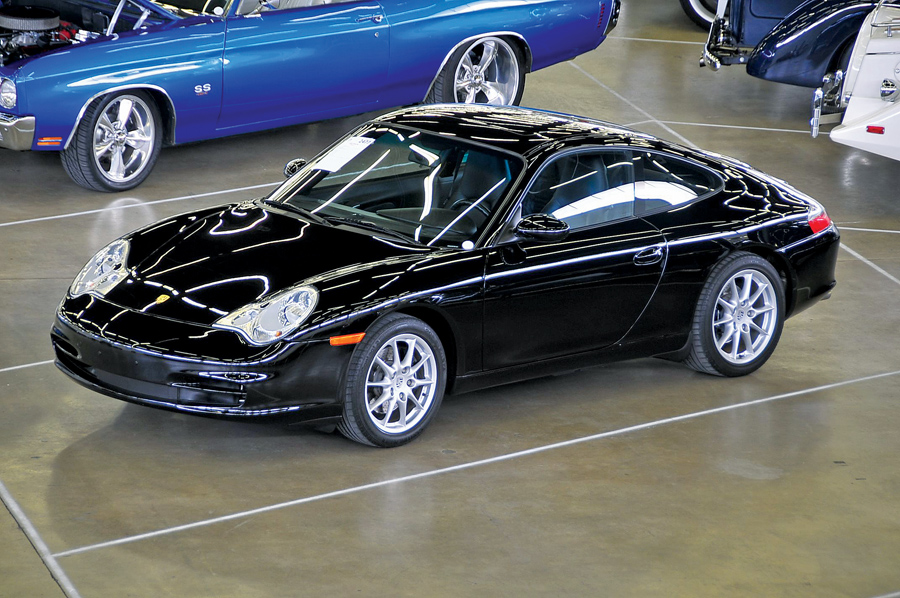
The 996 is the pit bull of 911s — but not in a dispositional or aesthetic sense.
However, like the odd pit bull that inexplicably snaps, the 996 can be a car that’s perfectly fine — until it’s not fine.
An infamous bearing
The source of the Porsche 996’s reputation is well known to readers of SCM and to class-action attorneys alike: The bearing on the intermediate shaft (IMS) that drives the four camshafts of the M96 and M97.1 flat-six engines has been known to fail at up to a 10% rate by 90,000 miles.
Like a little suicide vest located inside the engine, it sends bits of ball bearing everywhere, to lethal effect.
While the vast majority of M96 and M97.1 engines didn’t experience IMS failures, that statement is cold comfort to anyone on the receiving end of a $15,000-plus catastrophic engine failure in a 996.
A complete discussion of the IMS bearing itself and the attendant litigation is well outside the scope of an “Affordable Classic” column.
After all, we’ve been here before with other 911s and we’ve moved on. Witness the flawed 2.7-liter U.S. engines that powered the 1974–77 911s and the subsequent redemption of those cars in the marketplace. Like the case and head-stud problems in those older air-cooled cars, the bearing issue in the 996 can be addressed satisfactorily.
So it’s now time to move beyond the IMS issue and focus on what a fine driving experience the 996 can be — and at a very attractive price point.
A great, water-cooled Porsche
The 996 is probably the first totally clean-sheet 911 since 1964.
While a horizontally opposed, 6-cylinder engine hung out aft of the rear axle still powered the car, it was now water-cooled because of noise and emission concerns.
Both 2WD and AWD variants were offered in coupe, cabriolet and Targa (sliding-glass roof) body styles. In nearly every objective performance measure, it was better than the 993 that it replaced.
A 4.6-second 0–60 mph time, a 174-mph top speed and a 13.2-second quarter-mile time were nothing to sneeze at in 1998 — or even now.
Not a deluxe Porsche
There are certainly less-than-charming things about the 996.
The 996 was clearly built to a price. Porsche was struggling financially, and the key to profitability was ease of assembly and some commonality with the less-expensive, higher-volume Boxster.
Headlights and switchgear and much of the dash and seats are shared, and some of it is downright unattractive. Even minor details like the fuel-filler door and exterior door handles are less satisfactory in their design and/or operation.
The joy of driving a 996
On the other hand, the driving experience of the 996 rarely comes in for criticism. The car was an amazing 40% stiffer than the 993. For the first time, an open 911 felt as solid as the coupe.
The steering was quick and communicative — without the annoying bump steer of an SC or 3.2 Carrera. The ride was more than tolerable, and the 6-speed gearbox was a revelation for Porsche drivers who cut their teeth on 901 and 915 gearboxes.
The heat and a/c? They are like a normal car — and therefore most un-911-like.
A screaming deal
Because of the aforementioned IMS issues and the snotty scorn over its “fried egg” headlamps, the 996 is one of the more conspicuous members of the Stupid Cheap Club, a market segment of cars whose attributes are wildly disproportionate to their actual market value.
A 300-hp, 170-plus-mph Porsche that can be had for as little as $13,000 is the very definition of stupid cheap.
How to score yours
There are several 996 buying strategies that range from going commando to the crime-scene-lab approach.
Advocates of the former say you’re just fine doing due diligence and buying a higher-miles (but well-maintained) 996 with its original IMS bearing. Under that theory, if the IMS bearing has lasted 100,000-plus miles, it will be good for the life of the car.
This may well be true, but sensible people will still want to do a thorough pre-purchase inspection with a marque specialist.
Cutting open the oil filter and performing an oil analysis for metal shavings will add more than just the cost of an oil change to the inspection price, but it’s probably worth it to ensure that the bearing isn’t in the early stages of failing.
If the bearing has already been replaced, ask to see the old bearing.
Doing the IMS bearing on your nickel does give you the opportunity to address some other necessary maintenance, such as the air-oil separator, rear main seal, clutch and water pump.
If you go this route, make sure that you discount the car by about $3,000 to $4,000 over a done car.
Yes, there are a few other failure modes for the M96 engine that are rare, but, once the bearing is done, you have far less to worry about with a car that has no history of being tracked or abused. Then you can enjoy one of the best modern Porsche driving experiences for Chevy Sonic money.
Rob Sass is the editor of Porsche Panorama, the official magazine of the Porsche Club of America. ♦
